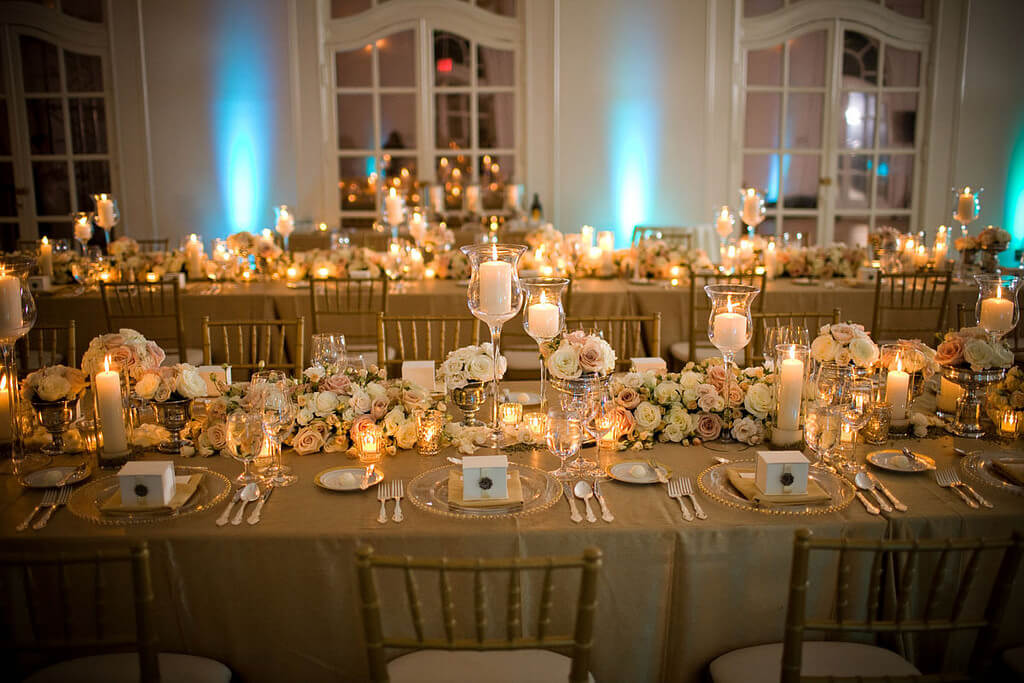The seating chart for the wedding reception can be notoriously tough to create, especially if your family is a complex and blended one. Follow these steps to design the right seating arrangement for the post-ceremony festivities.
Step 1: Decide where the bride and groom will sit.
The happy couple— that’s you and your new spouse— typically sit up on a dais, at the head of the room, or in some other central location. Make sure that you’re easily visible from points throughout the room. If you’re having a DJ, band, and toasts or speeches throughout the event, you should have a good view of the action from your place of honor.
Step 2: Pick the people who get to sit with you.
Who gets the privilege of sitting at the sweetheart table or the head table with you? That depends on how big the table is going to be. You can include the parents, or the best man and maid of honor, each with their “plus one.” If you’re having trouble deciding, you can talk to your wedding coordinator or caterer about expanding the size of the head table or making it a tiny table for two.
Step 3: Number or name the tables.
Unless you’re having a very formal, rather small reception dinner, you don’t need to have individual seat assignments for everyone. Just give your guests table assignments and then let them work out who sits next to whom. Many people simply number the tables at their wedding; but if you want to add a touch of uniqueness and fun, you could give every table a creative name. Just make sure that the table name is clearly displayed so that people don’t have to wander forever to find their spot.
Step 4: Group the guests by relationship.
Start grouping your guests by their connection to you. Siblings from both families can share tables, along with aunts, uncles, cousins, grandparents, and others. Friends from childhood, college, and high school come next; then your coworkers, neighbors, and other friends.
Step 5: Be strategic and sensitive.
If you know that certain people have trouble getting along, seat them at different tables for everyone’s benefit. Avoid having one single person at a table full of couples or filling a table with only single people. It’s a great idea to introduce a blend of acquaintances and new faces into each group, so that everyone at the wedding is sitting at a table with at least one familiar person.
Step 6: Consider age needs and limitations.
Are you having children at the wedding? You can think about having a kids’ table; but keep in mind that this only works if the children can handle their food themselves and can behave at the event. Depending on the ages and personalities of the children, it may be better to include them in the mix with the adults.
Leave a few seats open throughout the room so that you can accommodate a few extra guests at the last minute. Give yourself flexibility, but don’t stress too much about making every guest happy. After all, it’s your day.


